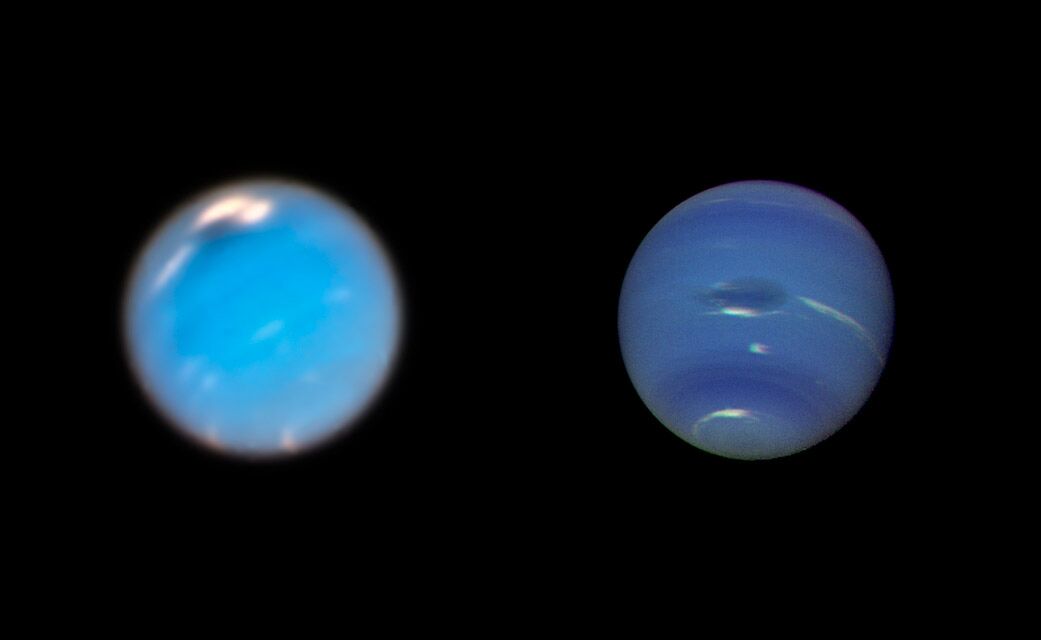The big picture: Neptune is the eighth and farthest known planet in our solar system (sorry, Pluto). It's the fourth largest planet by diameter and the third largest in terms of mass but its distance from Earth makes it somewhat difficult to study. As such, it doesn't get as much attention as some of the other planets but is compelling nevertheless.

NASA’s Voyager 2 spacecraft was the first to visit Neptune. As the craft zipped past the icy giant in 1989, it snapped photos of two large storms in the southern hemisphere which scientists called “The Great Dark Spot” and “Dark Spot 2.”
In 1994 when NASA aimed its Hubble Space Telescope at Neptune for another look, the two storms where gone. That was a surprise considering scientists had been used to looking at Jupiter’s Great Red Spot which has possibly been raging on for more than 100 years.

Amy Simon, a planetary scientist at NASA’s Goddard Space Flight Center in Greenbelt, Maryland, has been studying Neptune over the past several years to get a better grasp on how storms form on the icy planet. Since 2015, the Outer Planet Atmospheres Legacy (OPAL) project has analyzed images of Neptune, tacking the formation, path and dissipation of its various storm systems.
Imagery from 2015 to 2017 showed what scientists were no doubt hoping to witness – the birth of one such storm. It started when several small, high-altitude clouds made of methane ice crystals came together. A large, dark spot later appeared in the same region, suggesting that dark spots may originate much deeper in the atmosphere than scientists originally thought.
“Every time we get new images from Hubble, something is different than what we expected,” Simon said.
The team’s latest evidence suggests that new storms crop up on Neptune every four to six years with each lasting as many as six years. Two-year life spans seem more common, however, the group said in a paper published March 25 in the Astronomical Journal.
Lead image courtesy NASA images via Shutterstock
https://www.techspot.com/news/79371-tracking-life-cycle-giant-storms-neptune.html